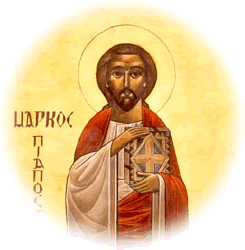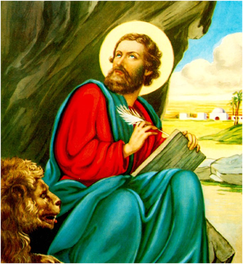St. Mark was a native of the North African county of Libya. He was born in the city of Cyrene in Pentapolis, The western part of Libya, west of the border of Egypt. St. Mark was born of Jewish parents three years after the birth of our Lord and Saviour, Jesus Christ. His original name was John and his surname was Mark : ” And when he {Peter}came to himself ….., he {Peter} came to the house of Mary the mother of John, whose surname was Mark, where many gathered together praying” (acts 12:11-12); and ” Barnabas determined to take with them John, whose surname was Mark” (acts 15:37); “And Barnabas and Saul returned from Jerusalem, when they had fulfilled their ministry, and took with them John, whose surname was Mark” (acts 12:25). St. Mark’s parents, Aristopolos his father and Mary his mother, migrated to Palestine shortly after the birth of St. Mark because of the Berber attacks on their town and property. They settled in Cana of Galilee not far form Jerusalem A few years later St. Mark’s father died and Peter Simon { St. Peter}, who was married to a relative of St. Mark’s father took care of St. Mark and considered him a son: “The Church that is in Babylon, elected together with you, salutes you and so does Marcus {Mark} my son”; (1 Peter 5:13). Peter Simon saw to it that St. Mark got a good education. St. Mark studied law and the classics. Church Traditions state that Mary, St. Mark’s mother, was admirer of Jesus Christ and followed Him everywhere and that St. Mark was one of the attendants who served at the feast in Cana of Galilee at which Jesus Christ turned the waster into wine: “And the third day there was a marriage in Cana of Galilee … and both Jesus and was called and his disciples, to the marriage .. when the ruler of the feast had tasted the water that was made wine, … This was the first miracle Jesus did …” (John 2:1-11)


